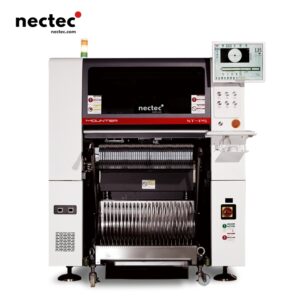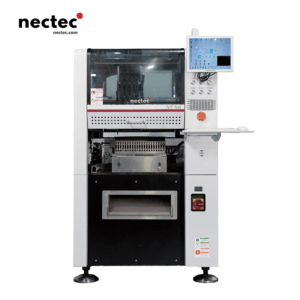The landscape of manufacturing has undergone a significant transformation over the past few decades. With the advent of technology, industries have seen a shift towards automation and precision, making pick and place machines an indispensable asset on the shop floor. These machines play a crucial role in improving production efficiency, reducing human error, and optimizing labor costs. This article delves into the evolution of pick and place machines and their impact on various manufacturing sectors.
Understanding Pick and Place Machines
Pick and place machines are automated devices designed to pick up components from one location and place them in another. These machines utilize advanced technologies such as robotics, vision systems, and artificial intelligence to perform tasks with high accuracy and speed. Primarily used in electronics manufacturing, they are also commonly found in food processing, logistics, and assembly lines across various industries.
The Core Components
- Robotic Arms: These are the heart of any pick and place machine. Equipped with grippers or suction cups, robotic arms are designed to maneuver quickly and precisely, allowing for efficient handling of different components.
- Vision Systems: Many modern machines are outfitted with vision systems that use cameras and sensors to identify and locate items, ensuring that the right components are picked up and placed correctly.
- Controllers: Programmable logic controllers (PLCs) or computer systems manage the operations and movements of the pick and place machine, ensuring synchronization with other processes on the production line.
A Brief History of Pick and Place Technology
The concept of automation in manufacturing dates back to the industrial revolution, but the first pick and place machines emerged in the mid-20th century. Initially used in simple tasks such as sorting and packing, these machines have evolved significantly with the development of technology.
The 1980s – The First Generation
The 1980s marked the introduction of the first generation of pick and place machines, primarily focused on the electronics sector. These machines featured simple mechanical designs that could handle basic tasks. However, they were limited in capability and often required manual intervention.
The 2000s – The Rise of Robotics
With advancements in robotics and computer technology, the 2000s saw a surge in the adoption of pick and place machines. The integration of robotic arms allowed for greater dexterity and speed, making them suitable for more complex tasks such as PCB assembly, where precision was paramount. The ability to program these robots for different tasks also made them versatile tools for various applications.
Today – The Era of Smart Automation
Today’s pick and place machines utilize smart technology, incorporating AI and machine learning capabilities. These machines can adapt to changes on the fly, making them incredibly efficient in dynamic manufacturing environments. Moreover, their enhanced vision systems minimize errors and allow for real-time quality control.
The Benefits of Pick and Place Machines
Integrating pick and place machines into manufacturing processes offers numerous advantages:
1. Increased Productivity
Automation reduces cycle times significantly, allowing for higher production volumes. Machines can operate continuously without fatigue, leading to increased output per hour.
2. Enhanced Precision
Automated pick and place machines can pick and place components with incredible accuracy, reducing the chances of human error that can lead to product defects.
3. Reduced Labor Costs
While the initial investment in automated machines can be significant, they lead to long-term savings in labor costs as fewer workers are needed to perform repetitive tasks. Workers can then be allocated to more value-added tasks such as quality control and maintenance.
4. Improved Safety
Automation reduces the risk of workplace injuries by handling hazardous tasks. Machines can operate in environments unsafe for humans, protecting employees from potential accidents.
Applications of Pick and Place Machines
Pick and place machines are versatile and can be adapted for numerous applications:
Electronics Manufacturing
In the electronics sector, pick and place machines are essential for assembling components on printed circuit boards (PCBs). Their ability to accurately position tiny components is vital for producing high-quality electronic devices.
Food Processing
In food manufacturing, these machines are used for packaging and sorting products, ensuring consistent quality and hygiene during the production process.
Pharmaceuticals
Pick and place machines facilitate drug packaging and assembly lines, ensuring medications are accurately dosed and packaged properly for patient safety.
Logistics and Warehousing
They are also employed in logistics for sorting and organizing goods in warehouses, streamlining the supply chain process and improving inventory management.
The Future of Pick and Place Technology
As technology continues to advance, the future looks bright for pick and place machines. The integration of Internet of Things (IoT) capabilities and more sophisticated AI will enhance their functionality. Future developments may include increased connectivity between machines and systems, allowing for smarter production environments where machines can communicate and collaborate autonomously.
Overall, the ongoing evolution of pick and place machines illustrates their critical role in modern manufacturing. By embracing automation and technological advancements, industries can improve efficiency, precision, and safety, ultimately leading to higher levels of productivity and profitability.
In a world where demand for shorter lead times and customized products continues to rise, businesses that invest in cutting-edge pick and place technology will undoubtedly have a competitive edge.










